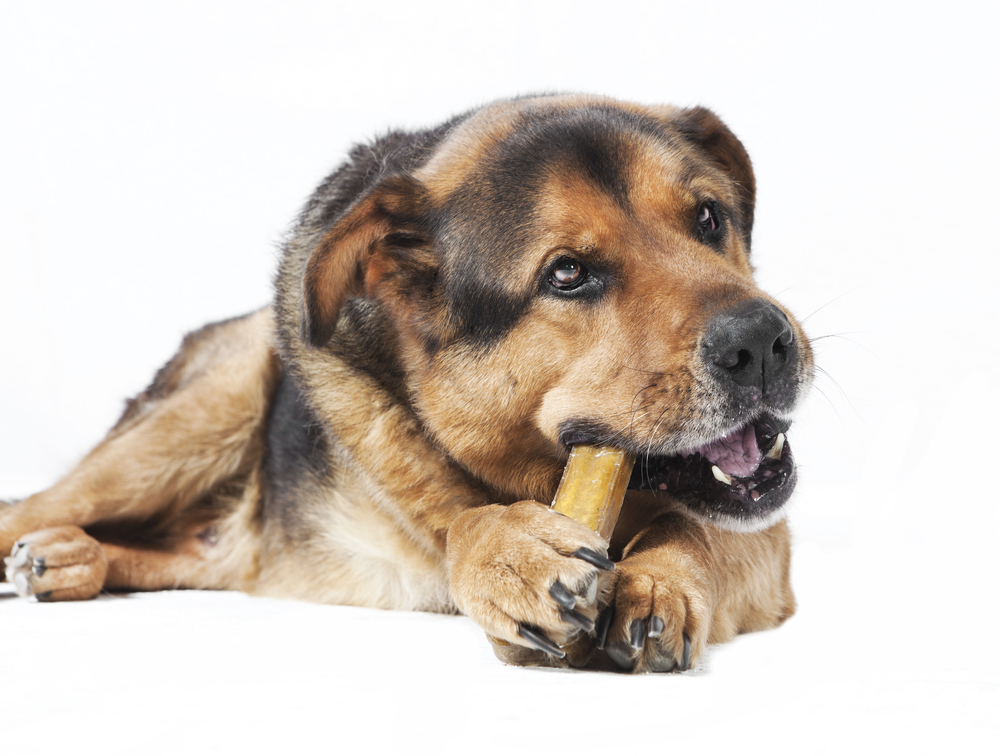Why Do Dogs Like Bones?

A dog looks so happy when chewing on a bone. The practice has a lot of health benefits for dogs that involves strengthening teeth and muscles, along with removing bacteria. Let’s delve into the details behind this instinctual activity, how it contributes to keeping an animal’s teeth in top condition, and why humans should avoid chewing on bones.
Natural Benefits of Bone Chewing
Natural Bacteria Removal
One of the primary benefits of bones is their role in removing plaque from an animal’s teeth. Chewing increases saliva production in the mouth, and saliva contains enzymes that help in breaking down food particles and cleaning the mouth. As the animal chews on the bone, the mechanical action helps scrape off plaque, which is a sticky film containing bacteria that can accumulate on teeth. If not removed, plaque can harden into tartar, leading to gum disease and tooth decay.
Therefore, overall gum health is increased by chewing on bones. Additionally, the act of chewing on a bone can also massage and stimulate the gums, promoting better oral health. All of these results accumulate in a decrease in bad dog breath thanks to removal of all the nasty bacteria causing it.
Strengthening of the Jaw
Regular chewing on appropriate bones helps in strengthening the muscles of the jaw, which helps in maintaining the structural integrity of teeth by providing a certain level of resistance that strengthens them. It’s important to remember chewing is a natural behavior for many animals, especially dogs. Chewing on bones can satisfy their instinctual urges and help prevent them from chewing on inappropriate items, which could harm their teeth.
What To Avoid
Dogs
Never give a dog a cooked bone, like a bone off your dinner plate. These can be dangerous for dogs as they can splinter and cause choking or serious damage to the dog’s mouth, throat, or intestines. Any bone you give your pet should be appropriate for the size of the animal to avoid choking.
People
We cannot chew on bones like many animals do for several reasons related to our physiology, dietary needs, and evolutionary changes. Human teeth are not designed for the same purposes as those of many bone-chewing animals. Our teeth, especially the molars, are flatter and designed more for grinding plant and meat material rather than the hard, abrasive action of gnawing on bones. Chewing bones could lead to dental damage in people, such as cracked or chipped teeth.
Our jaws are not designed to have the strength to chew on bones nor do we have the dietary capability to benefit from obtaining calcium in this way. We also can be at great risk of injury should a bone shard be swallowed since our digestive tracks aren’t as powerful.
Conclusion
While bones can be beneficial for an animal’s dental health, it is crucial to choose the right type of bone and monitor your pet while they are chewing to avoid potential risks. Additionally, please remember that bones should not be the sole method of pet dental care; they should complement other dental hygiene practices like brushing. As always, consult with Eascor Animal Hospital to find out the best and safest options for your specific pet.
